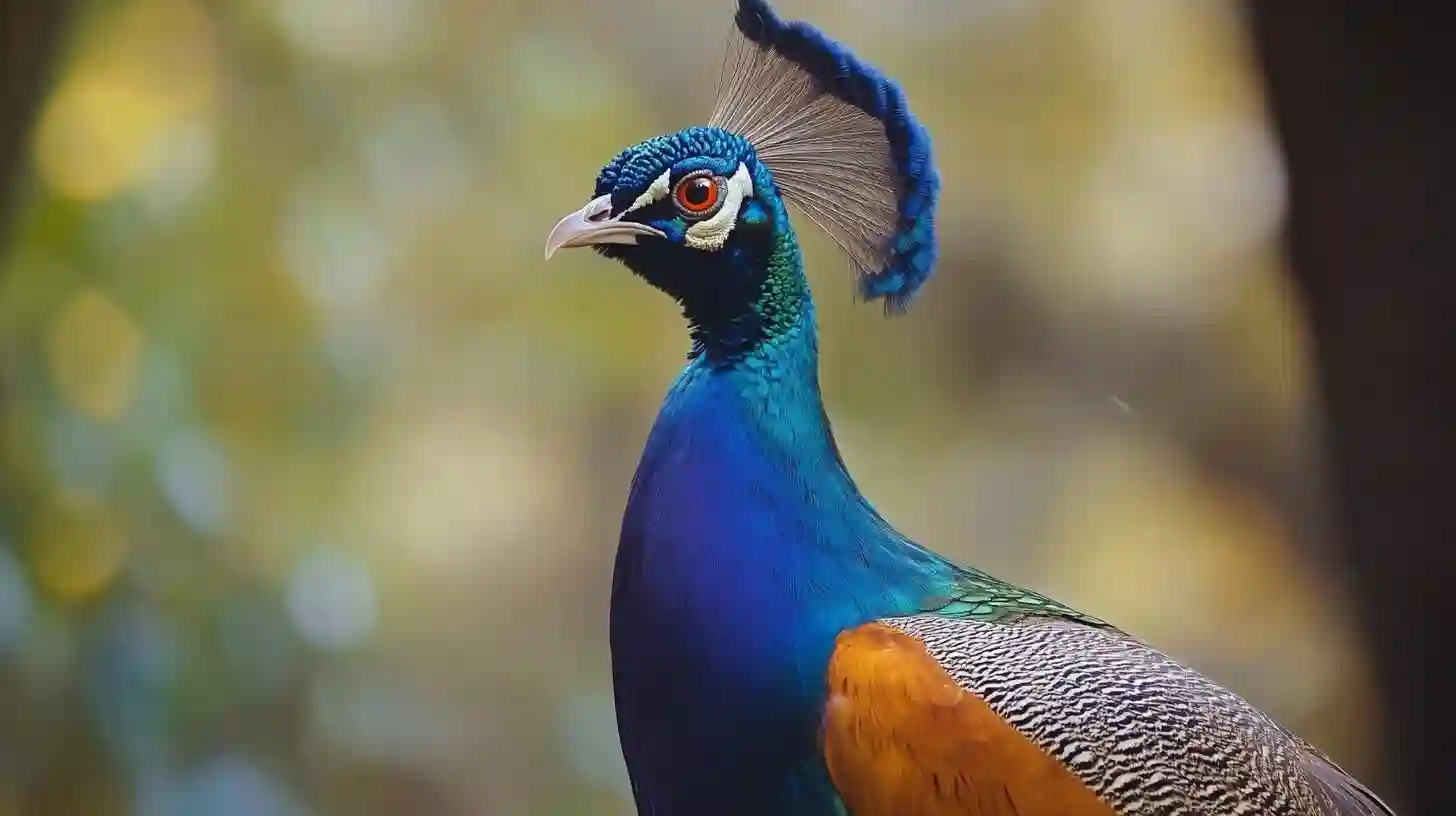
Thoughtvaultzone

Peafowl, often considered the epitome of avian beauty, possess an elegance and grace that captivate the hearts of all who encounter them. With their iridescent plumage and distinctive fan-like tails, these birds are not only aesthetically striking but also steeped in cultural significance and natural history. The majestic peacock, the male of the species, flaunts an array of shimmering colors that glimmer in the sunlight, creating a dazzling display that enchants both humans and wildlife alike. Their tail feathers, or train, can stretch out over six feet long and boast intricate eye patterns known as ocelli. When vibrantly displayed during courtship rituals, these feathers create an enchanting spectacle that showcases the peacock's health and genetic fitness, drawing attention from peahens, the female of the species.
Peafowl are not merely a feast for the eyes; they are fascinating creatures that belong to the pheasant family. There are three primary species: the Indian peafowl, the green peafowl, and the blue peafowl. Indian peafowl, also known as the common peafowl, are abundant in the Indian subcontinent and have become synonymous with exotic beauty worldwide. The green peafowl, native to Southeast Asia, is equally stunning, sporting vibrant green and blue plumage, while the blue peafowl, primarily found in Indonesia, exhibits a more subdued palette yet still reflects a remarkable brilliance.
Their behavior is as awe-inspiring as their appearance. Peafowl are social birds, often found in small groups or flocks. Their calls sound like a series of loud screams and can be heard from great distances, particularly during mating season when males compete for the attention of females. They engage in elaborate courtship displays, which involve fanning their magnificent tails while bobbing and strutting to attract mates. This performance is not just a display of beauty; it is also a demonstration of strength and vitality, factors that are crucial in the selection of a suitable partner. Observing these rituals offers a glimpse into the intricate dance of nature, where each performance is a blend of instinct and artistry.
The life of a peafowl is enveloped in rich cultural symbolism across various societies. In many cultures, peafowl are seen as symbols of royalty, beauty, and elegance. In Hindu mythology, the peacock is associated with the goddess Saraswati, who embodies wisdom and knowledge, while in ancient cultures, these birds were often linked to immortality and protection. The peacock’s feathers have been used in art, fashion, and decor for centuries, symbolizing prosperity and divine connection. Their stunning appearance has led them to become a popular motif in various forms of artwork, from paintings to textiles, further embedding their significance in human culture.
Peafowl are not confined to a singular habitat; they thrive in diverse environments ranging from woodlands and grasslands to wetlands and agricultural fields. Their adaptability is one of their many strengths, which allows them to flourish in both wild and semi-tame conditions. However, this resilience does not shield them from the encroachment of urbanization and habitat destruction. Although they are classified as a species of least concern, viable populations must be safeguarded to ensure their continued existence in the wild.
Additionally, their diet consists of a varied selection of food sources, including seeds, fruits, insects, and small reptiles which contribute to their nutritional needs. This omnivorous diet plays an essential role in their ecosystem, helping control insect populations and aiding in seed dispersal. The foraging behavior of peafowl also encourages a harmonious balance within their habitats, illustrating their critical role as both prey and predator in the avian world.
Breeding and raising young is a notable aspect of peafowl life. The peahen is primarily responsible for nesting and caring for the chicks once they hatch. After laying a clutch of eggs, the peahen incubates them for about a month, during which time she fiercely protects her nest from potential predators. Upon hatching, the chicks are precocial, meaning they are relatively mature and mobile, allowing them to quickly adapt to their environment and learn essential survival skills from their mother. Watching a peahen guide her chicks as they navigate their surroundings is a heartwarming testament to the bond between parent and offspring, showcasing the nurturing behavior that is integral to their life cycle.
Engaging with peafowl in their natural or semi-natural environments offers observers a unique opportunity to appreciate their splendor and learn more about their ecological significance. Bound by the threads of beauty and importance, these exquisite birds truly warrant recognition as one of nature's most captivating creations.